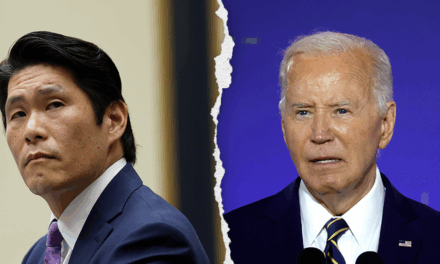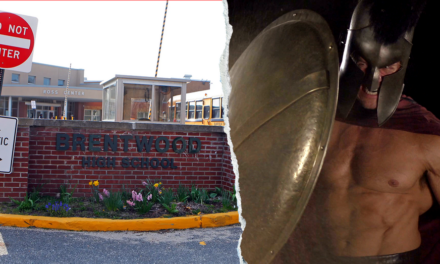The landscape of K-12 education in the United States has been a focal point of political discourse, especially as discussions around significant legislative measures gain momentum. Former President Donald Trump has made headlines with his ambitious proposal for a ‘big, beautiful bill’ aimed at reforming various sectors, including education. Understanding how such a proposal could influence K-12 education is pivotal for educators, parents, and policymakers alike.
Trump’s proposed education bill, which is part of a larger agenda focused on revitalizing American infrastructure and national interests, seeks to allocate considerable resources to improve educational institutions. This bill, characterized by its noteworthy funding increases, promises to redefine how public schools operate, the effectiveness of teaching methodologies, and the overall educational experience of students across the country.
One of the central elements of Trump’s education proposal is its potential financial investment in public schools. The bill aims to funnel billions of dollars toward upgrading school facilities, investing in technology, and enhancing educational resources. Proponents argue that these funds could bridge the gap in educational equity, especially in underserved communities that often lack essential resources. By compelling states to allocate funds effectively, the initiative seeks to ensure that every child has access to a quality education.
However, the financial implications extend beyond just infrastructure and resources. Trump’s bill also proposes substantial tax credits and scholarships for families, empowering them to choose schools that best fit their children’s needs. These measures may promote increased competition among schools, compelling them to enhance educational offerings. Advocates believe that school choice can lead to innovative teaching methods and better educational outcomes as parents actively engage in their child’s educational journey.
Another significant aspect of Trump’s ‘big bill’ revolves around curriculum reforms. Education experts predict a shift towards more emphasis on science, technology, engineering, and mathematics (STEM) fields, driven by the current job market’s demands. This adjustment aims to prepare students for a workforce increasingly dominated by technological advancements. The proposal also highlights vocational training programs and apprenticeships, preparing students for alternative pathways that may not necessarily require a four-year college degree.
However, while the proposal’s intent to enhance STEM education and vocational training is commendable, critics express concern regarding the potential neglect of the arts and humanities sectors. A well-rounded education often includes exposure to a variety of subjects, fostering creativity and critical thinking. Balancing the emphasis on STEM with other essential disciplines is essential for nurturing well-rounded individuals.
Additionally, Trump’s bill emphasizes the importance of safety and security in schools. The disturbing rise in school shootings has raised concerns about student safety, urging legislators to prioritize measures to protect children. The bill incorporates funding for mental health programs, school security enhancements, and community safety initiatives, creating a comprehensive approach to safeguarding students.
Despite the optimism surrounding Trump’s proposed changes, significant opposition looms on the horizon. Critics, including educators, unions, and civil rights advocates, voice concerns about the bill’s implications for public school funding and the potential incentives for privatization. Some fear that drawing resources away from public schools for vouchers and charter school funding could undermine traditional educational institutions, leading to further stratification within the education system.
Critics also argue that implementing rigorous standards and increased accountability measures could create undue pressure on teachers and schools. The push for standardized testing as a means of gauging student performance has been contentious, with some educators arguing that it undermines creativity and individuality in teaching practices. The hope for reform must be balanced with respect for the diverse needs of both students and educators.
Furthermore, as legislative discussions progress, there are concerns about how this proposal will be received at the state level. Education is traditionally managed at state and local levels, and the implementation of a federally driven bill can spark conflicts regarding autonomy and decision-making power. States grapple with existing systems and standards, and any attempt to impose new measures needs to undertake the complexities involved.
The bill’s passage will also depend on political dynamics, including negotiations between parties. With Democrats and Republicans often at loggerheads over education policy, navigating this terrain is crucial for Trump’s proposal’s success. Bipartisan support can aid in smoothing the passage of significant education reforms, but whether consensus can be reached remains an open question.
In light of all these dynamics, parents and educators must remain informed about the implications of Trump’s proposed education bill. Active participation in local and national discussions surrounding education policy can foster a greater understanding of how these changes may directly affect students. Engaging with school boards and community organizations allows for collective voices to be heard, advocating for students’ needs during these potential transitions.
In conclusion, the discussion surrounding Trump’s ‘big, beautiful bill’ presents various possibilities for K-12 education in America. By introducing substantial financial investments, promoting school choice, and enhancing security measures, the proposal aims to reshape how education is delivered. However, detractors are right to raise concerns about the bill’s potential consequences on public schools, teacher autonomy, and the holistic education of children. The bill’s passage hinges on political negotiations and public support, which underscores the importance of vigilance and advocacy within local communities. As educational paradigms evolve, ensuring that every student has access to a well-rounded and high-quality education remains paramount in shaping the future of America’s schools.
































